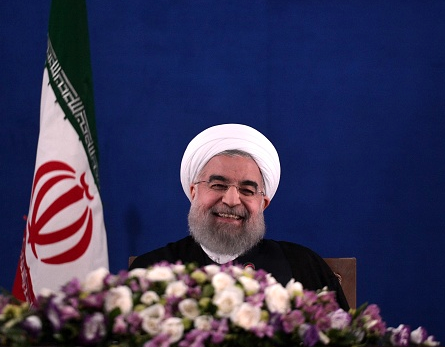He may be a political insider, but Hassan Rouhani ran his 2017 presidential campaign as an anti-establishment candidate. More than 40 million Iranians voted, and despite the close election President Rouhani won a second term in May with 57% of the votes.
When the election results were announced, thousands of people spilled into the streets dancing, singing, and celebrating his victory over the more conservative candidate Ebrahim Raisi. There was a general feeling of euphoria in the country, particularly among Iran’s middle and upper classes.
Rouhani’s victory gave him a stronger mandate to push through reforms, and gave moderates a more powerful voice in both Iran’s domestic and international affairs. Nonetheless, substantial challenges remain ahead for Rouhani and his supporters. With Iran’s economic woes and difficult security landscape, Rouhani will have to strategically balance several high-stakes matters simultaneously. He will focus on two key areas: the economy and the country’s security.
International sanctions wreaked havoc on the Iranian economy. Iran’s poor were the hardest hit: They struggled to get jobs, find adequate housing, put food on the table and buy medication. Yet it wasn’t just the poor who were affected. Prices were unstable, budgets continuously stretched thinner and individual lives were unstable at a basic level as they witnessed the values of their savings consistently diminish. Iran’s economic challenges remained even after the historic nuclear deal. In 2016, the year after the deal was signed, Iran continued to suffer from high inflation and unemployment.
While Iran’s economy did rebound somewhat after the signing of the nuclear deal, the average Iranian has not yet seen major benefits as a result. With his re-election, President Rouhani is now faced with immense pressure to deliver the economic benefits that many Iranians expected but have not attained. It is widely believed he will use his mandate to continue implementing market-based reforms and overhaul Iran’s subsidy program. In addition, in order to strengthen the country’s industrial infrastructure, President Rouhani’s government has reached agreements with several major oil companies such as Total, which is seeking a stake in a $4 billion gas field; and Lukoil, which hopes to develop Iranian oilfields.
The second key area that President Rouhani will focus on is Iran’s security. This issue will take on greater urgency in the wake of ISIL’s terrorist attacks in Tehran on June 7 on two Iranian national symbols: the shrine of the Islamic Republic’s founder Ayatollah Khomeini, and the parliament. It is believed that the coordinated terror attacks were conducted by Arab Iranian Sunnis or Iranian Kurds affiliated with ISIL, who had left Iran to fight for the group in Iraq and Syria and then returned to terrorize the country.
Although Iran has cracked down on ISIL-linked cells in the country numerous times in the past, particularly along its border with Iraq, this was the first such attack in the country. In response, Iran will likely adopt a two-pronged approach. The first prong is associated with the Islamic Revolutionary Guard Corps (IRGC), which has blamed Saudi Arabia for the attack and vowed revenge. The second prong will involve closer cooperation with regional allies based on shared interests and security threats. This cooperation may even extend to neighboring Turkey, whose relationship with Iran has been tumultuous in recent years.
One thing is certain: given Iran’s economic and security landscapes, President Rouhani will face an extremely challenging four years.
